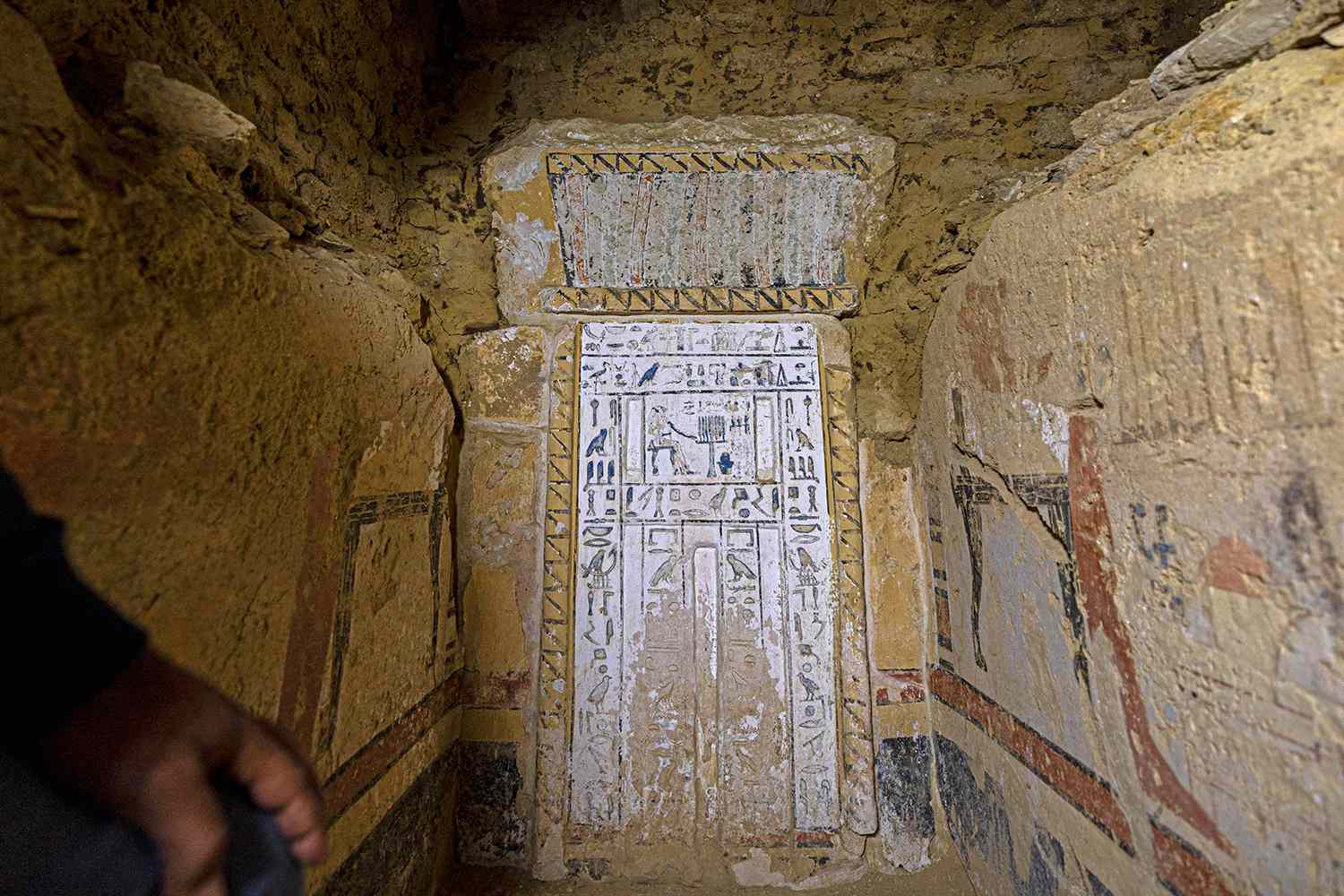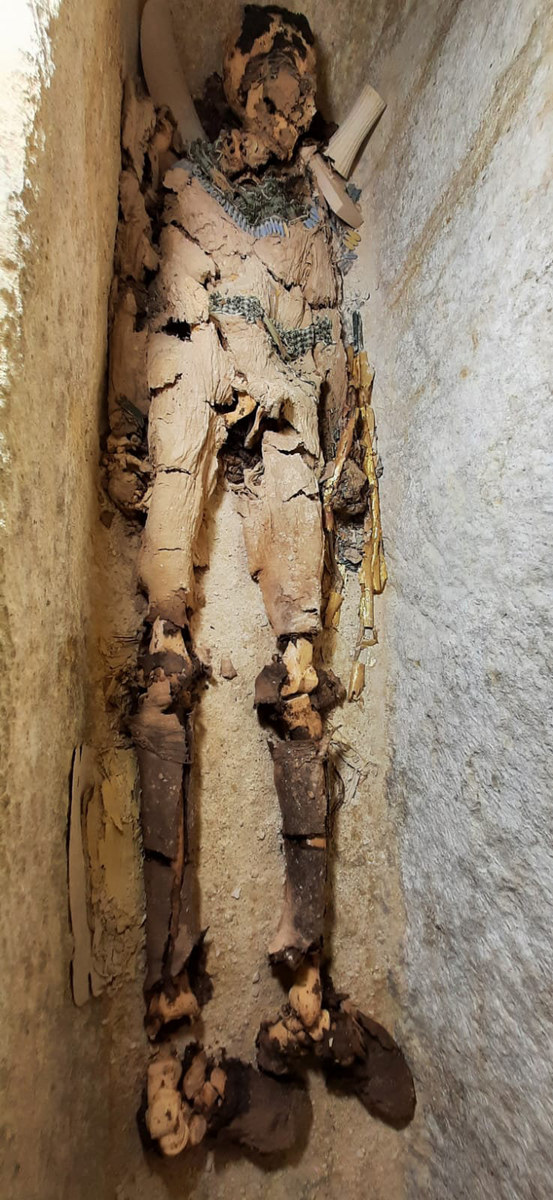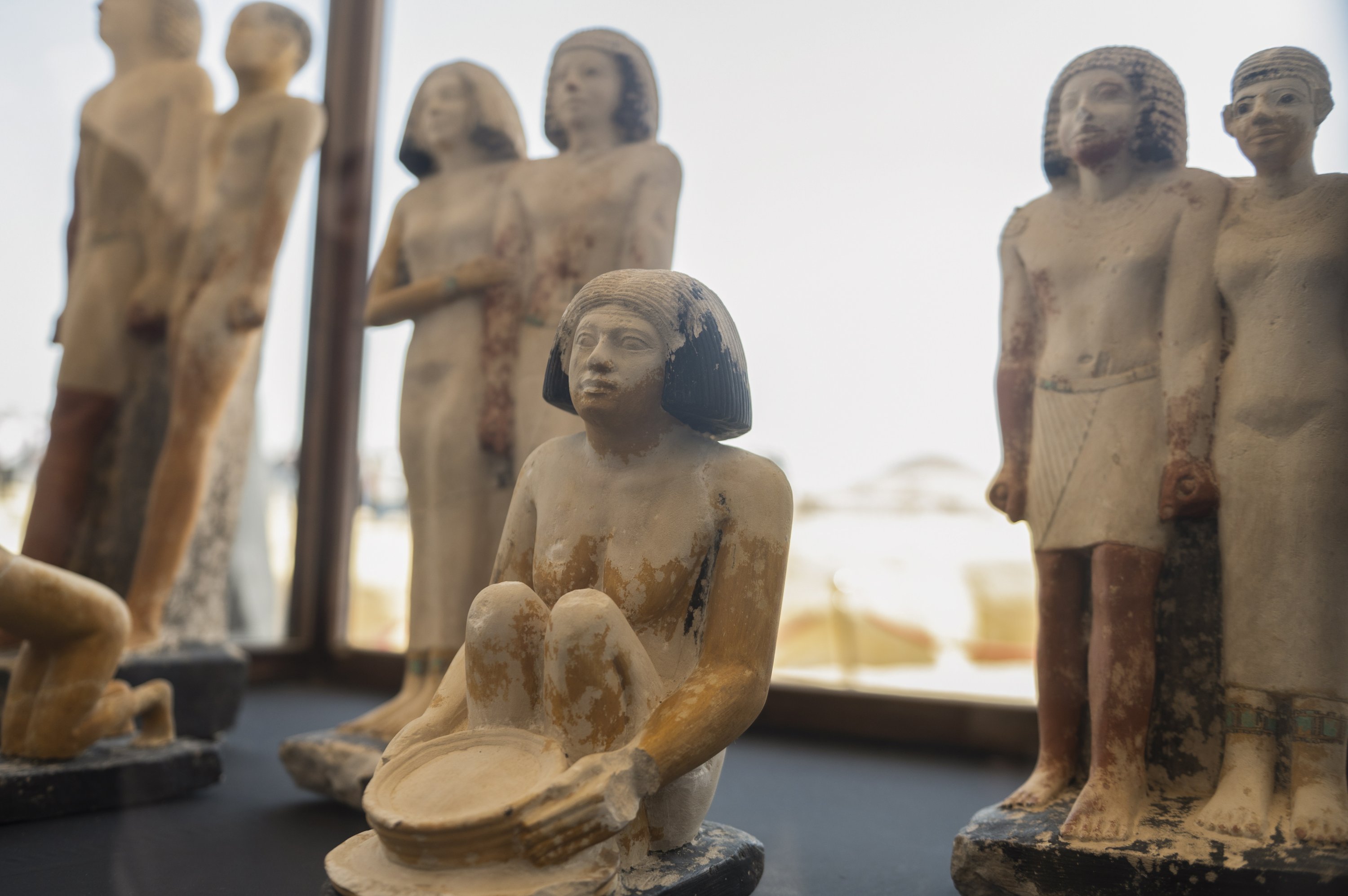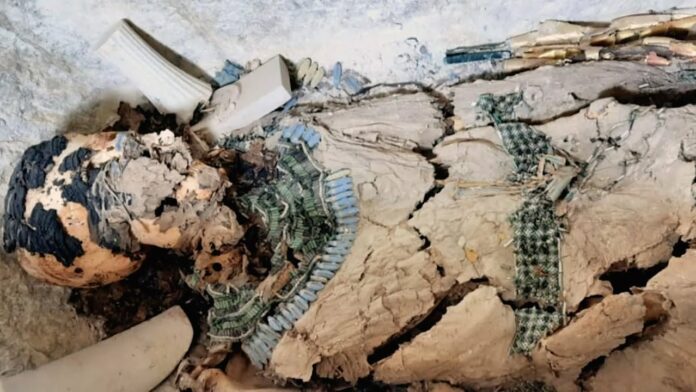In a groundbreaking discovery that has captivated the archaeological community, Egyptian archaeologists have unearthed the oldest non-royal mummy ever discovered in Egypt, buried at the bottom of a deep shaft in Saqqara. This remarkable find, dating back over 4,000 years, provides an extraordinary glimpse into the burial practices and societal structures of ancient Egypt’s Old Kingdom. Dr. Zahi Hawass, the director of the excavation team at the Gisr el-Mudir site, announced these findings, highlighting the significance of the mummy and other artifacts discovered nearby.
The Discovery at Saqqara

The ancient ruins of Saqqara, near Cairo, have long been a treasure trove for archaeologists. Recently, a major discovery was made when a large, rectangular limestone sarcophagus was found at the bottom of a vertical shaft about 50 feet deep. The sarcophagus, weighing about 45 tons with a lid of approximately 5 tons, had remained sealed with mortar for some 4,300 years.
Dr. Zahi Hawass and his team meticulously worked for about two hours to open the sarcophagus, revealing the oldest non-royal mummy ever discovered in Egypt. This mummy, wrapped in gold leaf, was identified by the name inscribed on the sarcophagus: “HqA-Sps,” or Hekashepes. The elaborate burial suggests that Hekashepes was a person of considerable importance, despite not being a pharaoh.
The Significance of Hekashepes
![]()
The discovery of Hekashepes is monumental for several reasons. Firstly, it is the oldest mummy wrapped in gold leaf ever found in Egypt, indicating the high status of the individual. The intricate burial, located 15 meters underground, underscores the significant effort and resources dedicated to Hekashepes’ afterlife journey.
Dr. Hawass emphasized the importance of this find, noting that such an elaborate burial deep underground was reserved for individuals of great significance. Hekashepes’ sarcophagus and the gold-wrapped mummy inside provide valuable insights into the burial practices and social hierarchies of the Old Kingdom.
Other Notable Discoveries

While the discovery of Hekashepes is undeniably significant, it was not the only noteworthy find at Saqqara. Dr. Hawass and his team also uncovered 14 stone statues in another shaft, about 33 feet deep. These statues date back to the Old Kingdom, also known as the Age of the Pyramids, spanning from 2700 to 2200 BC. These statues are unique and are the first such large collection found in Saqqara in this century.
Dr. Hawass explained that these statues provide new insights into the art, mummification practices, and the people who lived and worked in ancient Egypt. One of the tombs uncovered belonged to a priest who was responsible for the pyramid complex of King Unas, the last king of the 5th Dynasty.
The Rich History of Saqqara
Saqqara is part of a sprawling necropolis that was once the capital of ancient Egypt, known as Memphis. The site is home to numerous pyramids, including the famous Step Pyramid of Djoser. The recent discoveries add to the rich tapestry of history at Saqqara, providing new information about the cultural and religious practices of ancient Egyptians.
The site is also a UNESCO World Heritage site, underscoring its global significance. The artifacts and tombs found at Saqqara offer a window into the past, revealing the complexities of ancient Egyptian civilization.
Recent Discoveries in Luxor

The week of landmark announcements by Egyptian archaeologists did not end with Saqqara. Another team revealed the discovery of a massive burial ground in the ancient city of Luxor. This site, close to the ruins of a “complete” Roman-era city, has added to the excitement and interest in Egypt’s ancient past.
The Luxor discovery includes well-preserved artifacts and structures, providing further insights into the lives and practices of ancient Egyptians. These finds, alongside those at Saqqara, highlight the ongoing importance of archaeological work in uncovering and understanding history.
Conclusion
The discovery of the oldest non-royal mummy in Egypt, wrapped in gold and buried deep in Saqqara, is a testament to the rich and complex history of ancient Egypt. This find, along with the statues and other artifacts uncovered, sheds new light on the burial practices, art, and societal structures of the Old Kingdom. Dr. Zahi Hawass and his team have made significant contributions to our understanding of ancient Egyptian civilization, and these discoveries continue to captivate and educate people around the world.
As archaeologists continue to explore and excavate sites like Saqqara and Luxor, we can expect to learn even more about the fascinating and intricate history of one of the world’s oldest civilizations. The legacy of ancient Egypt, with its pyramids, mummies, and rich cultural heritage, remains a source of endless fascination and discovery.
